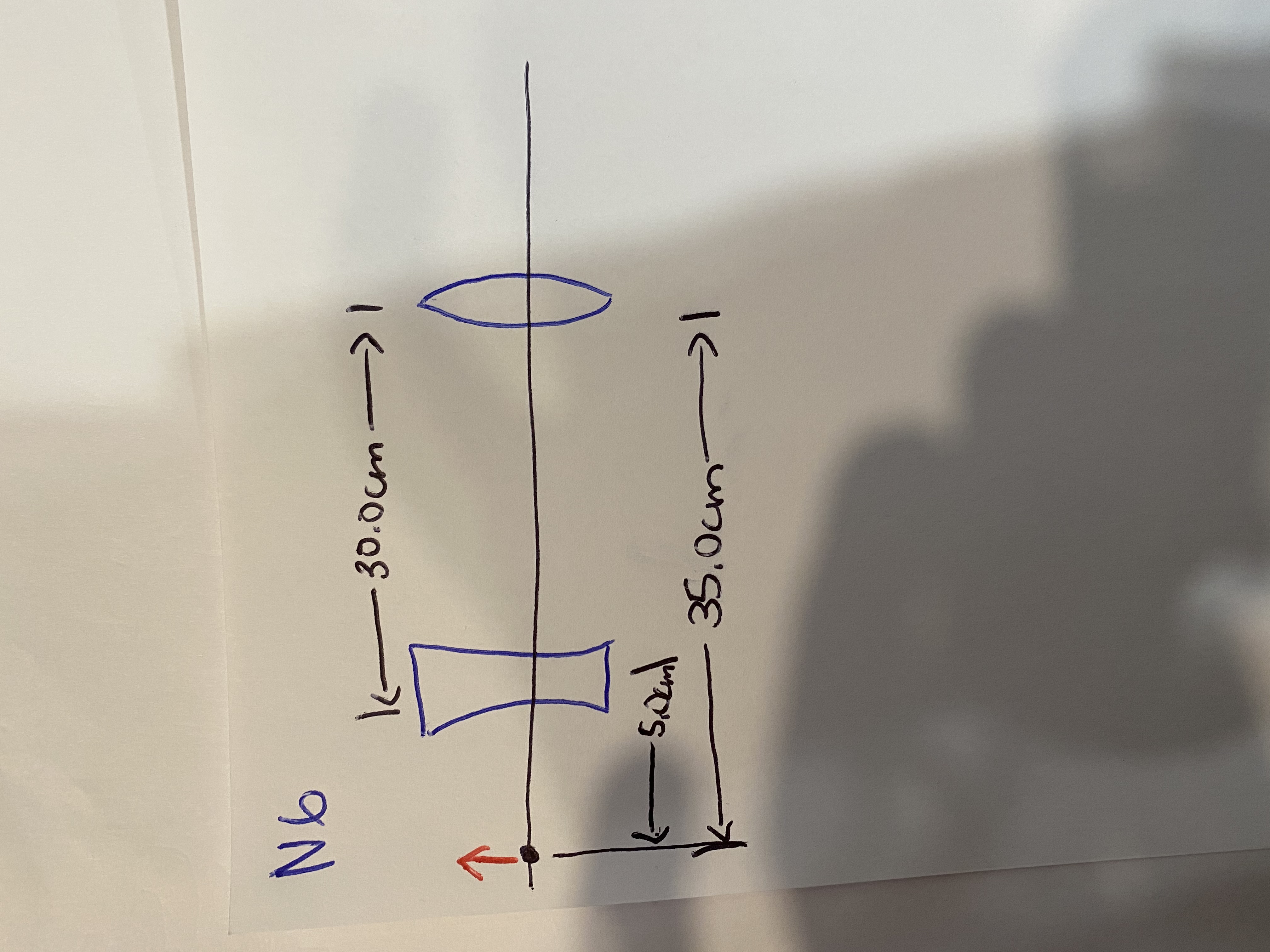Question
a compound microscope consists if a diverging lens (f = 5.0 cm) which is located 30.0 cm to the left of a converging lens (f = 35.0 cm). a 1.00-cm-tail object stands to the left of the diverging lens, exactly at its focal point.
a. determine the distance of the final image relative to the converging lens.
b. what is the height of the final image (including the proper algebraic sign)?
c. what is the overall magnification M of the compound microscope (including the proper algebraic sign)?

Expert Solution
This question has been solved!
Explore an expertly crafted, step-by-step solution for a thorough understanding of key concepts.
Step by stepSolved in 7 steps with 1 images

Knowledge Booster
Similar questions
- A teenage with hyperopia has an abnormal near point of 1.0 m. What power of corrective lens is required to correct his vision provided that the normal near point of the human eye is 25 cm? Assume that the distance between the lens and the eye is zero, or equivalently, the tennager is wearing contact lenses. a. + 1.5 D b. + 2.0 D c. + 2.5 D d. + 3.0 D e. + 3.5 Darrow_forwardA contact lens is made of plastic with an index of refraction of 1.54. The lens has an outer radius of curvature of +1.95 cm and an inner radius of curvature of +2.47 cm. What is the focal length of the lens? cm Need Help? Read It Watch Itarrow_forwardAn object is 50 cm to the left of a +20 cm focal length lens. Where does the image form? O a. 20 cm to the right of the lens b. At infinity c. 50 cm to the right of the lens O d. 33 cm to the right of the lensarrow_forward
- 1. A small object is 25.0 cm from a bi-concave diverging lens, a second biconvex lens with focal length of 12.0 cm is 30 cm to the right of the diverging lens. The two lens systems form a real inverted image 17cm to the right of the converging lens. What is the focal length of the diverging lens? What is the magnification of the object once it passes through the diverging lens?arrow_forward4b. A converging lens (fi= 30.0 cm) is placed at a distance of 50.0 cm from a diverging lens a lens (f₂=-30.0 cm) shown in the figure. The combination forms a final image at distance 50.0 cm behind the diverging lens. (a) Where is the first object located? (b) Draw a ray diagram to indicate all the positions of the objects and images for both lenses.arrow_forward1. An object is positioned 40 cm away from a thin lens with a refractive index of (n2) 1.65. First half of the lens is in air (n = 1.0) while the second half is in medium (n3 = 1.48), as shown in the figure below. The front radius of curvature of the lens, R₁ = 10.0 cm. What should be the second radius of curvature of the lens to produce an image at 20 cm? ከ1 n3 In₂ Si So R₁ R₂arrow_forward
- A bug is 3 cm to the left of a lens with f = -4.56 cm. Find the image distance from the lens. A second lens of f = 8 cm is placed 1.21 cm to the right of the first lens. Find the distance of the final image from the second lens. Use the image from the first lens as an "object" for the second lens. The final image is: A. Upright B. Inverted The final image is: A. Real B. Virtualarrow_forwardA converging lens with a focal length of 12 cm forms a real image of 7.40 mm tall and 18.000 cm to the right of the lens. (a) Determine the position and size of the object. ст mm Is the image upright or inverted? A. Upright B. Inverted Are the object and image on the same size or opposite sides of the lens? You should draw the ray-diagram for this situation. A. same B. oppsitearrow_forwardHW8 Q10 A magnifying glass is a single convex lens with a focal length of f= 13.0 cm. What is the angular magnification when this lens forms a (virtual) image at −∞? How far from the object should the lens be held? What is the angular magnification when this lens forms a (virtual) image at the person's near point (assumed to be 25 cm)? How far from the object should the lens be held in this case?arrow_forward
- A converging lens is used to produce a virtual image that is erect and has a magnification of 3.90 with an object placed 14.3cm from the lens. a. What is the focal length of the lens? b. If the object distance is doubled, what type of image is produced? c. What is the new magnification?arrow_forwardA microscope has a 12.0x eyepiece and a 59.0x objective lens 20.0 cm apart. What is the focal length in centimeter of the eyepiece? A. 1.26. B. 2.08. C. 2.45. D. 3.19. E. 3.57arrow_forward2. An object is placed 50.cm in front of a converging lens and then 15.5cm in front of a diverging lens. Both lenses have a focal length of 12.0cm. For both cases, find the image distance.arrow_forward
arrow_back_ios
SEE MORE QUESTIONS
arrow_forward_ios